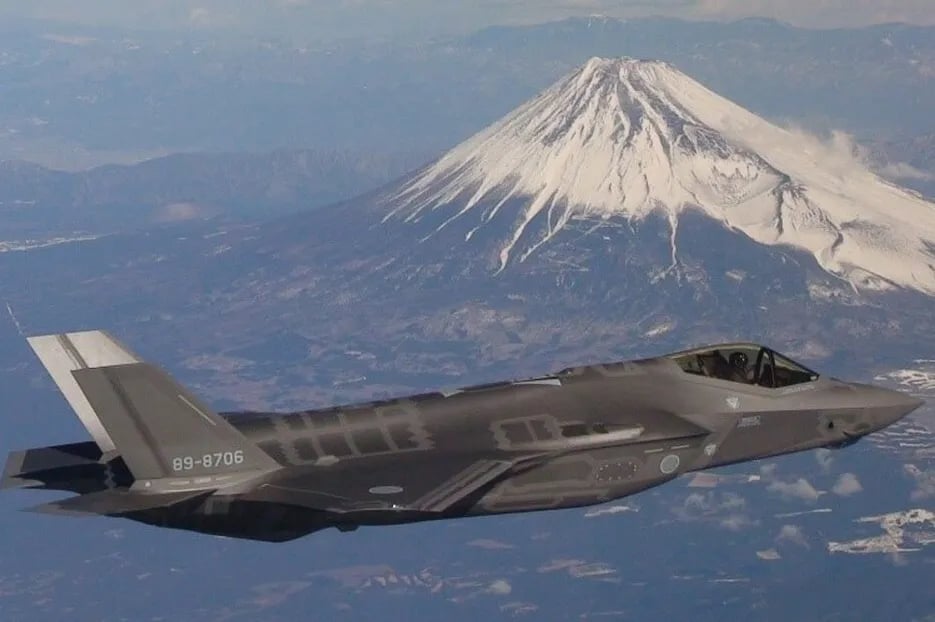
The Japanese government had set a goal of spending 43 trillion yen or $302 billion on defence in the timeframe of 2023-2027. The Cabinet also approved a loosening of export restrictions allowing Japan to supply complete lethal weapons and munitions to other countries under certain conditions.
The FY2024 budget allocates 1.247 trillion yen or $8.78 billion to integrated air and missile defense capabilities. Missile defense has been an increasing priority for Japan in recent years due to North Korea’s increasing advancement in ballistic missile capabilities and North Korean pronouncement that it would not hesitate to use such weapons against its enemies. Among the items allocated under such are the two Aegis System Equipped Vessels (ASEV) destroyers which have a funding allocation of 373.1 billion yen or $2.6 billion which will cover construction of the first vessel in FY2024 and preliminary costs for the second ship which will begin construction in FY2025.
Japan Defense Minister Minoru Kihara had earlier announced the securing of FY 2024 funding for the ASEV on Tuesday. The first ship is expected to be commissioned in 2027 with the second ASEV will enter service the following year. Japan’s MOD stated in its FY2024 budget document that they expect that the acquisition cost for the destroyers will be 392 billion yen or $2.75 billion per ship. Also allocated under that category is 75.7 billion yen or $532.4 million for joint development with the United States of a Glide Phase Interceptor (GPI). The remaining funding in this category covers the cost associated with in-service air defense and interceptor missile systems such as the PAC-3 Patriot, SM-3 Block IIA and SM-6 missiles.
734 billion yen or $5.16 billion has been allocated for stand-off defense capabilities with the MOD’s FY2024 budget document stating that this capability will be strengthen to deal with naval vessels and landing forces that invade Japan, including its islands. The items covered under this category include development, acquisition and expansion of production facilities for domestically produced missiles and guided munitions and acquisition. It also covers the acquisition of the Joint Strike Missile (JSM) and Joint Air to Surface Standoff Missile (JASSM) along with the cost of adding Tomahawk cruise missile launch capabilities to Japan Maritime Self Defense Force (JMSDF) ships. Japan plans to field Tomahawk cruise missiles in FY2025.

Along with the ASEV, the FY2024 budget provides for the construction of the first two of a new class of frigates displacing 4,800 tons which will also be equipped with long range missiles and improved anti-submarine warfare capabilities. The new frigate class follows on from the 3,900 tons Mogami class frigates, which had been cut down to 12 from a planned total of 22 ships due to Japan deciding a larger and more capable frigate was required. A total of 12 of the new frigate class is planned to be procured. The FY2024 budget also provides for an eighth Taigei-class attack submarine, a new 14,500-ton fleet oiler, 3 improved P-1 Maritime Patrol Aircraft (MPA) and six SH-60L helicopters.
Funding has been provided for a new tri-service maritime transportation group along with three 114-foot transports for the group to operate to enable rapid transportation of troops in Japan’s southwest region which includes the disputed Senkaku Islands. A permanent joint command, tentatively known as the Joint Operations Command comprising of 240 personnel headed by a four-star rank officer is to be established in Ichigaya, Tokyo, where the Ministry of Defense is also located, by the end of FY2024 according to the budget document. The budget document stated that the lack of a joint command had among other things, made it difficult for the Japanese military to coordinate with U.S. Indo-Pacific Command and the use of a temporary joint task force made it difficult to respond seamlessly to changing situations.
Also on Friday, Japan’s cabinet approved a loosening of export restrictions allowing it to supply complete lethal weapons and munitions to other countries under certain conditions. Japan Chief Cabinet Secretary Yoshimasa Hayashi in his daily press briefing that day stated that under the new adjustment to defence exports, the cabinet had approved the transfer of Patriot missiles manufactured in Japan under license to the United States.
The Japan manufactured Patriots are to replenish U.S. stocks that have been transferred to the Ukraine. Japan’s regulations for defence exports forbid the exports of weapons to countries at war and all Japan arms exports to a country require Japan’s approval if the country wishes to transfer the equipment to another country. At moment, the current conditions of the loosening of exports of Japanese arms and munitions only cover exports of items manufactured under license to the country of origin of the license, the U.K. is said to be interested in obtaining 155mm artillery rounds from Japan which are manufactured under licence from U.K. company BAE as the U.K. seeks to replenish it stocks following donations of such to Ukraine.





